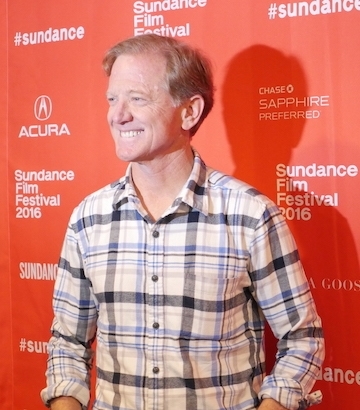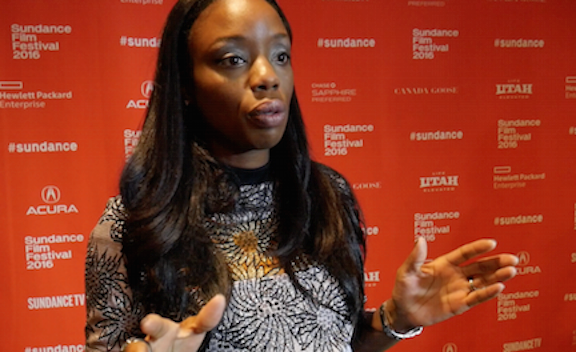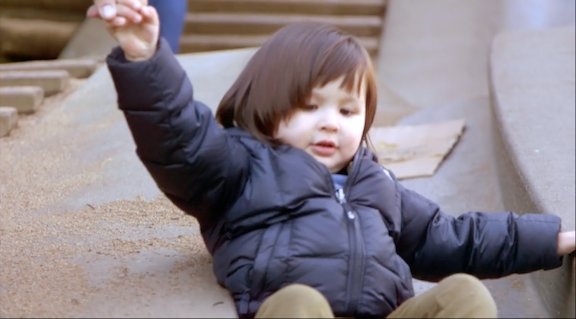
We like to think of childhood as a time of carefree adventure; a time of hide-and-seek, butterflies and fairytales. But new research shows this charmed scenario doesn’t play out as often as we had thought. In fact, the statistics are quite grim:
• 28 percent of children have experienced physical abuse
• 27 percent have experienced substance abuse
• 13 percent have experienced domestic violence
• 20 percent have experienced sexual abuse
It’s common knowledge that childhood trauma carries an increased chance of adult incarceration or homelessness but new evidence shows it also carries serious health risks including heart disease, diabetes and cancer. Childhood trauma, or toxic stress, can shorten life expectancy by 20 years. These traumatic experiences cross cultural and socioeconomic boundaries and include bullying, cyber bullying, community violence and parental separation or divorce.
When director James Redford and producer Karen Pritzker saw these bleak statistics, they wanted to know why and, more importantly, what could be done to change them. The result is Paper Tigers and Resilience: The Biology of Stress & The Science of Hope, two feature-length documentaries that explain the lasting effects of childhood trauma and what parents, teachers and community members can do to turn the negative tide.
 |
| James Redford (photo by Dakota Bailey) |
Redford is no beginner when it comes to using film to generate social change. At the age of 30, a chronic illness led to two liver transplants. When he recovered, he realized there was a lot fear and false information on the subjects of transplantation and organ donation. His response was to found the James Redford Institute for Transplant Awareness and to produce “The Kindness of Strangers,” a documentary to raise awareness about the issue.
The film screened at Sundance and played on HBO. Redford says, two years after the documentary was released, he learned of a family who made the difficult decision to become organ donors because they had seen the film.
“It’s so oddly tragic and you’d rather that situation not occur but… at that pivotal moment… that saved seven lives,” he said.
Redford says he looks back at that early experience as being formative in his belief that film is a powerful tool that can have a positive impact on the cultural dialogue.
“That film began conversations and created branches into other organizations and was used as a tool to help spread the word. You can’t really control how it will have an impact but, once you’ve been in a situation where you’ve experienced how powerful it can be, it pulls you back to do it again.”
Redford was just completing his latest HBO documentary film, “Man V. Ford” Toxic Hot Seat, about the the poisoning of a Native American Community in New Jersey, when a new idea surfaced, sparked by a conversation between Redford’s wife Kyle and her friend Karen Pritzker.
“They shared the fact that they had raised kids that had dyslexia and felt that there really wasn’t an awareness tool out there that could demonstrate that, in this dark time of middle school, when it’s all about the mechanics, that it’s not an academic death sentence,” he said. “You can’t get around some of the difficulties but there are also things that people should understand and know about dyslexia that isn’t all bad.”
The Big Picture: Rethinking Dyslexia, a documentary by Redford and Pritzker, premiered at the Sundance Film Festival in 2012. With Redford as director and Pritzker as producer, the film showed what it’s like living with dyslexia through the eyes of people who know firsthand.
"My undiagnosed dyslexia made school a real challenge," said Pritzker in the book RenWomen, by Dale Griffiths Stamos and Scott Griffiths, which featured Pritzker as one of three co-founders of The MY HERO Project. "My teachers thought I was simply careless or lazy. In college I had to spend every weekend in the library to keep up and work much harder than my classmates."
She said learning that three of her four children were dyslexic was like, "falling down a rabbit hole.”
“It was frustrating,” she said. “When your child is diagnosed with dyslexia, they give you, literally, a forty-page document that is near indecipherable. I would say, 'Can you tell me in four sentences what the problem is?' They couldn’t do it."
While searching for answers that would help an estimated 8.5 million school children in the United States, Pritzker found Dr. Sally Shaywitz, a leading researcher in the field of dyslexia from Yale University. The Big Picture showcases the work of Shaywitz and features Redford's son Dylan Redford and Pritzker's daughter Allison Schwartz, both dyslexics. Other interviews include business magnate Sir Richard Branson, California Lt. Gov. Gavin Newsom and investment broker Charles Schwab, all success stories despite, or perhaps because of, their dyslexia. The inspiring film touched the hearts of people dealing with dyslexia and ignited a grass-roots movement to promote education and understanding.
“It really did give birth to an online community around dyslexia. It gave birth to an awareness and an organization that then adopted the film and, through the film, spread like wildfire online across the whole country,” said Redford. “Today, I think the social media link to the Big Picture holds some of the most valuable knowledge out there for people who are trying to figure out dyslexia.”
The awareness is spreading. A screening of The Big Picture served as the inaugural event of the U.S. Congressional Dyslexia Caucus, which formed in 2012. On February 18, 2016, President Barack Obama signed the Research Excellence and Advancements for Dyslexia (READ) Act, which provides millions of dollars for research on dyslexia.
Redford credits the success of the film with strengthening his belief that film is a powerful instrument for generating social change. Calling attention to important issues seems to be in his blood. His mother Lola Van Wagenen is a feminist historian and web producer. His father Robert Redford is the actor and environmentalist, with whom he founded The Redford Center, a nonprofit that uses the arts to promote positive social and environmental change.
Redford’s legacy of service gathered even more momentum when Pritzker sent an overnight package that contained a medical abstract titled The Adverse Childhood Experiences (ACE) Study, one of the largest investigations to examine the link between trauma in childhood and health and wellbeing in adults.
“I read it and the top of my head blew off,” said Redford. “We realized that this is staggering. We all know that adverse home environments for children are not a good thing, just on an emotional and a psychological level, but, here, we now understand the biomechanics of it all.”
 |
| Photo courtesy of Paper Tigers Movie |
The ACE Study was a joint effort by the Centers for Disease Control and Prevention and Kaiser Permanente's Health Appraisal Clinic in San Diego in which more than 17,000 patients, of varying socioeconomic status, gave detailed information about their childhood experiences of abuse, neglect, and dysfunction in their families. The results showed that certain experiences are major risk factors for the leading causes of illness and death and a lower quality of life.
“Basically, it proved that children who were born into homes that had a struggle with violence or abuse or neglect… the impact of that stress, now called toxic stress, can physiologically alter their brains and bodies in ways that make them far more susceptible to disease,” said Redford.
“So, if you’re in a heightened state of alert, and you feel the world is fundamentally unsafe, and your body is rigged to respond to a very hostile world, having a cigarette, or doing drugs or drinking, or eating or having a lot of sex… those are all things that make you feel better in the short term but are not necessarily good for you in the medium-to-long term,” said Redford. “You put all that together and you have a serious impact on people’s life outcomes.”
The upside, he says, is that by figuring out the connections, it makes it possible to work toward prevention and recovery. For Redford and Pritzker, the study sparked the three year project that generated Paper Tigers and Resilience: The Biology of Stress & The Science of Hope.
While making Paper Tigers the crew spent a year at Lincoln Alternative High School in Walla Walla, Washington, in a part of town known for high rates of truancy, assaults and gang activity. They got to know kids who had been exposed to toxic stress and were floundering in the educational system. The crew gave each kid a camera and tripod and asked for their help in telling their stories. The result is a poignant, sometimes painful look at young people navigating through life, carrying scars no child should have to bear.
Educators at Lincoln were familiar with the research and, in 2009, decided to make changes to the way they educated, and helped, these struggling kids. Teachers learned techniques to prevent the escalation of conflict. Expulsion was reserved for grave matters and in-school suspension was put in its place instead. The school partnered with a community organization to create an on-campus medical center to bring health care to the students, with wellness visits and psychological counseling.
“You put all those things together and you get a high school that’s putting out a lot more graduating kids, kids who are going to college, kids with higher GPAs,” said Redford.
The results speak for themselves:
• There was a 90 percent decrease in suspensions.
• There was a 75 percent decrease in fights.
• There was a 5-fold increase in the graduation rate.
I’m not describing something as complex as building a space shuttle,” said Redford. “nor did I just describe act of congress.. We’re just talking about some pretty simple things and yet we’re not really doing them yet.”
 |
| Dr. Nadine Burke Harris (photo by Dakota Bailey) |
When it became clear that one film would not fully address the issues, Redford and Pritzker started making Resilience: The Biology of Stress and the Science of Hope, a companion film that takes a deep dive into the science behind the study.
In the film, researchers compare brain images of children who had experienced trauma with children who had not. They found kids who were exposed to extreme trauma had decreased activation in the parts of the brain required to control emotion. They also had an exaggerated fear response.
“Exposure to early adversity and trauma literally affects the structure and function of children’s developing brains,” said Dr. Nadine Burke Harris, a pediatrician featured in the film. “So the kid next to them hits them or the teacher reprimands them in a way they’re uncomfortable with, right? Literally, what they’re feeling, that activation, is like there was a truck coming at them.”
Dr. Victor Carrion, a Stanford University Professor of Psychiatry and Behavioral Sciences, explains, “The reality is that we all need a certain amount of stress, a certain amount of anxiety to perform well. If we don’t care about that exam we have tomorrow, we’ll probably fail.” He adds, “But if all day long you’re feeling like a truck is coming at you, day after day after day, that’s going to take a toll on the body.”
Along with examining the neurotoxic effect of childhood stress, Resilience explores ways to protect kids who have been exposed. Redford says one important piece of the puzzle is for kids to have interaction with a caring adult who understands the issues.
After explaining the science, Resilience takes us inside Strong Elementary School in Connecticut, where teachers have learned ways to help kids who have been exposed to toxic stress learn. Students engage in imaginative learning; they express themselves through drama therapy and communicate by writing their feelings.
“Being trauma informed, the administrators and teachers of that school understand that if they don’t intervene and help reduce the stress load on the kids, and give them a chance to deescalate and express their feelings, then you’re starting the cycle again that young, that early,” said Redford. “The outcomes are already showing that they’re far better off in the classroom, their attention is much better.”
The problem is multi-generational and solving it means interrupting the multi-generational cycle. Everyone on board seems to agree that the solution must include both education and compassion.
“We have to address the parents and the child,” said Harris.. “I have met parents who have done some really regrettable things to their kids… I’ve never in all my years of practice seen a parent who didn’t love their child.”
“Most often what we see are parents who are strapped, who are trying to figure out how to make ends meet with the resources that they have, and how to cope with their own history of adverse childhood experiences and toxic stress in the context of raising their children,” said Redford. “I think we should show more compassion. I think we need more compassion in general.”
As for education, Redford says children and adults need to learn and develop thoughts, actions and skills to cope and thrive and community members need to do their part.
“Poverty, crime, and violence and abuse… these things not going to go away overnight. And if you say, ‘well, we’ve got to fix those things before we help the kids,’ we’re never going to fix those things because we’re going to keep on cranking out generations that are traumatized and, therefore perpetuating the violence, abuse and neglect,” said Redford.
 |
| Photo courtesy of Resilience: The Biology of Stress and the Science of Hope |
Getting information from a medical journal to the public is no easy task. Forming key alliances with people passionate about policy changes is one tool Redford and Pritzker are using to help spread the word.
“We’re working with the American Academy of Pediatrics because they consider this the country’s number one health threat,” said Redford. “They’re doing what we can’t do. We’re not medically trained, we don’t have PhDs, but they do and yet they don’t know how to make movies.”
Redford says he’s also become a fan of good old community screenings and bringing people in a room where they can experience the story and the information together and talk about it afterwards. Paper Tigers has screened at more than 400 community events put together by people wanting to help.
“The community screening is a social event to bring people together.
They share, they listen and they leave, and someone in that room is going to make a difference somehow.” (need to fact check here… the quote is accurate but needs attribution)
The bottom line is creating a community that is “trauma informed.”
“Is there a teacher that can spend a little extra time? Is there a minister who goes the extra mile for a child? Is there a pediatrician who takes an hour instead of five minutes? Is there a police officer who talks to the community or family instead of just throwing the kid in the back of the car? Is there a juvenile judge who factors in very accurate reports of the abuse in the child’s home before he decides the best way to treat that child? If you are trauma informed, in the public sector, you will do things differently,” Redford said





